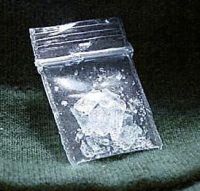Meth Addiction
- Meth Addiction Treatment
- Signs Of Meth Addiction
- Dangers of Meth Addiction
- Stages of Meth Addiction
- Meth Addiction Withdrawal
Meth Information

What is Crystal Meth?
 Crystal meth is an unpredictable, dangerous, and sometimes lethal drug. It is also known as speed, ice, meth, and crystal on the streets. Like cocaine, crystal meth is a potent central-nervous-system stimulant. Crystal meth represents the fastest-growing drug threat in America today, according to the National Institute on Drug Abuse.
Crystal meth is an unpredictable, dangerous, and sometimes lethal drug. It is also known as speed, ice, meth, and crystal on the streets. Like cocaine, crystal meth is a potent central-nervous-system stimulant. Crystal meth represents the fastest-growing drug threat in America today, according to the National Institute on Drug Abuse.
Methamphetamine is structurally similar to methcathinone, amphetamine, and other stimulants. It may be produced from ephedrine or pseudoephedrine by chemical reduction. Most of the necessary chemicals to manufacture this dangerous drug are readily available in household products or over-the-counter medicines. This makes meth appear unusually easy to make, unlike cannabis and cocaine which are both harvested directly from plants.
Meth is a synthetic stimulant which when ingested produces a strong feeling of euphoria and is highly addictive. Pure methamphetamine is a colorless crystalline solid. Others describe meth as a white, odorless, bitter-tasting powder that easily dissolves in water. When found on the street, the drug may be pure or diluted with the chemicals that were used to synthesize it. Meth can be smoked, snorted, injected, or taken orally.
Another common form of methamphetamine is crystal meth, or "ice." It is named ice based on its appearance (that of clear, large chunky crystals resembling rock candy). Crystal meth is smoked in a manner similar to crack cocaine. About 10 to 15 "hits" can be obtained from a single gram of the substance. Users have referred to smoking ice as a "cool" smoke, while the smoking of crack is a "hot" smoke. The euphoric effects from smoking ice last longer than that of smoking crack.
Methamphetamine affects the brain by acting on the mechanisms responsible for regulating a class of neurotransmitters known as the biogenic amines or monoamine neurotransmitters. As in most neurotransmitter chemistry, its effects are adapted by the affected neurons. There is a decrease in the production of the neurotransmitters being blocked from re-uptake, leading to the tolerance and withdrawal effect.
The acute effects of meth closely resemble the physiological and psychological effects of the fight-or-flight response including increased heart rate, elevated blood pressure, vasoconstriction, pupil dilation, bronchial dilation, and increased blood sugar. The person who ingests meth will experience an increased focus and mental alertness and the elimination of the subjective effects of fatigue as well as a decrease in appetite. Many of these effects are broadly interpreted as euphoria or a sense of well-being, intelligence, and power.
The most dangerous type of methamphetamine user is one who is tweaking. Typically, during this stage, the abuser has not slept in 3 to 15 days. This lack of sleep and wear on the body makes the user irritable and paranoid. The tweaker has an intense craving for more methamphetamine. However, no dosage will help recreate the euphoric high they seek. This causes frustration and leads to unpredictability and a strong potential for violence.
Withdrawal from high doses of methamphetamine produces severe depression. Chronic abuse produces a psychosis that is similar to schizophrenia and is characterized by paranoia, picking at the skin, self absorption, and auditory or visual hallucinations. Violent and erratic behavior is frequently seen among chronic, high-dose meth abusers.
